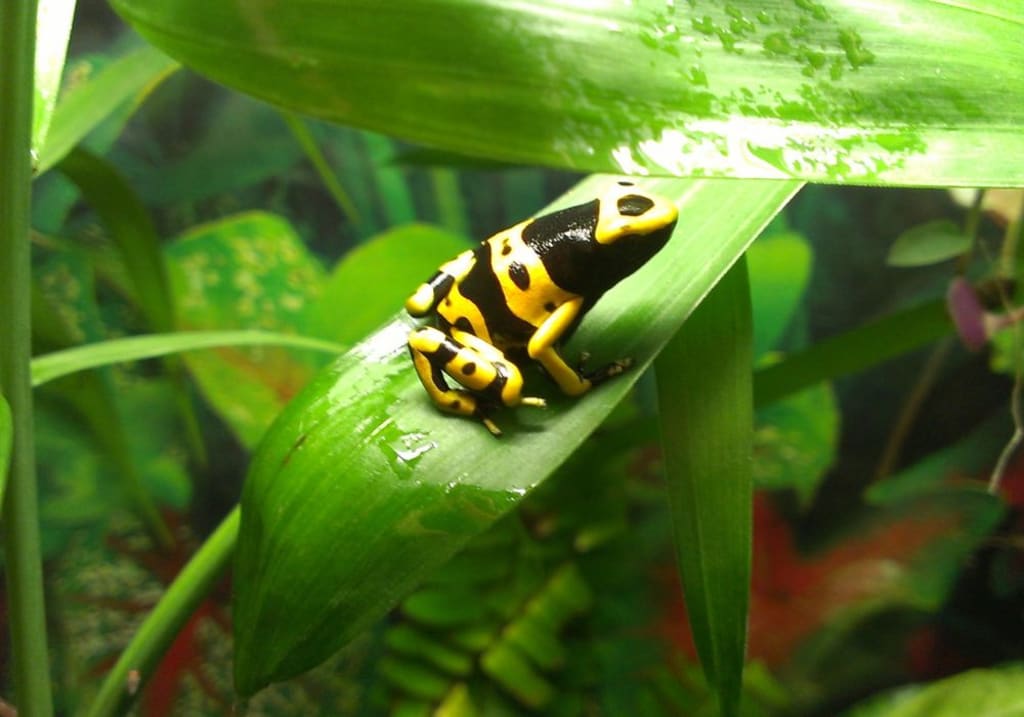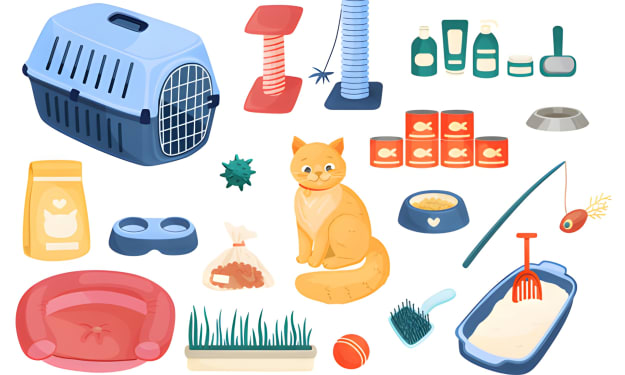Frogs in the Garden
Selecting Plant Species to Make a Vivarium Perfect for Your Pet

Introduction to Frog-Friendly Plants for Vivariums
Having a pet frog can be a lot of fun, but there are some special considerations when selecting the perfect vivarium setup. The key to making sure your pet frog is safe and happy in its new outdoor home is to choose the right plants that make a frog-friendly environment. Many common garden plants are toxic or otherwise dangerous for frogs, so it’s important to select the right species for your vivarium.
The best plants for frog-friendly vivariums are those that are easy to care for and can survive in both aquatic and semi-aquatic settings. These plants must also be non-toxic to any animals that may have access to the enclosure, such as birds, lizards, or other amphibians. Additionally, these plants must be able to thrive in the specific climate where your vivarium is located.
A great starting point when choosing the best plants for a frog-friendly vivarium is selecting moisture loving species such as mosses, ferns, and grasses. These types of plants will thrive in moist conditions which are ideal for frogs. They also provide plenty of hiding places as well as protection from predators and other dangers. Additionally, these aquatic and semi-aquatic species won't require much maintenance or fertilizing.
Picking Easy Care Plant Species
If you’re looking for even easier plant species that require little maintenance, then look no further than low growing ground cover perennials such as Saxifraga stolonifera or Rosularia platyphylla. These types of ground cover help keep soil temperatures cool while providing plenty of hiding places for frogs. They also don’t need much pruning or trimming so they won’t take up too much time on garden maintenance.
Selecting Vivarium Appropriate Plants
Finally, it's important to consider what type of climate your vivarium is located in before selecting plant species. While many amphibian friendly plant species will grow well across multiple climates there are some varieties that are better suited for specific climates such as warm tropical regions or colder winter areas. For example, anubias nana mafuba is an excellent choice for a cold winter environment while Caladium bicolor will do better in warmer climates.
Conclusion
Frog-friendly plants play an essential role in creating the perfect outdoor space for your pet amphibian. When making your selection it's important to consider ease of care, toxicity levels, and climate compatibility so you can find the perfect plant species that can create an ideal living environment for your frog.
Identifying the Perfect Frog-Friendly Plant Species for Your Vivarium
Frog-friendly plants are essential for creating a vivarium that is safe and comfortable for your pet. After all, it's important to provide your pet with a suitable habitat that replicates their natural environment as best as possible. When selecting plant species to make your vivarium perfect for your pet frog, there are several things to consider. Firstly, you should take into account whether the plants are non-poisonous and safe for your frog to eat. Secondly, you should look at the type of environment the plants will create within the vivarium, such as providing shade or moisture. Finally, it’s important to consider whether the plants require any special care and attention in order to survive in the enclosure.
There are many different types of frog-friendly plants that you can choose from when creating a vivarium. For example, many species of ferns are suitable for frogs as they provide ample cover and typically don't require additional water or light requirements. Additionally, mosses like java moss or Christmas moss can be used in terrariums as they help retain moisture and provide shelter for your pet frog. Other popular options include bromeliads, which produce colourful flowers and offer plenty of hiding spots; violets or begonias which have bright leaves; and air plants like tillandsia which don't need soil to grow and thrive in humid conditions. When selecting plant species for your vivarium, it's important to ensure that they're not toxic or poisonous to frogs.
You should also take into account how much sunlight each one needs and whether they require additional fertilisers or soil additives in order to survive in the enclosure. Additionally, make sure there’s sufficient space between each plant so that your pet has enough room to move around freely without getting injured or stuck between them. It's also worth noting that some species of frogs may actively eat certain types of plants if given the chance; therefore it’s advisable not to include these varieties in your enclosure unless you’re confident that they won't be consumed by your pet frog!
Creating a perfect vivarium for your pet frog requires careful consideration of its individual needs but also an understanding of how different plant species interact with each other within a closed environment such as a terrarium or aquarium. With these tips in mind, you can easily choose the ideal selection of frog-friendly plants for an aesthetically pleasing enclosure that will give your pet an ideal home!
Tips on How to Care for Frog-Friendly Plants in a Vivarium
Creating a vivarium with frog-friendly plants is a great way to ensure your pet is happy and healthy. When selecting the perfect plant species, it’s important to take into consideration the particular needs of your frog species, including light exposure, humidity levels, and the type of substrate and other materials used in the vivarium. Here are some tips on how to select the right plants and create an exciting habitat for your pet Frog.
First, consider the types of plants that will thrive in your frog's environment. It is important to choose frog-friendly plants that will be able to survive in the conditions you can provide them with. This means selecting species that will tolerate low light levels, high humidity, and certain substrate materials. Additionally, look for plants that are easy to care for, such as ferns or ivy which require minimal maintenance once established.
Second, make sure you have an appropriate amount of space for each plant species in your vivarium. This means making sure you have enough room for both large and small varieties of flora so they can grow without overcrowding one another. Additionally, consider utilizing different levels of soil substrate so you can better control root depth and growth rates.
Thirdly, select air-purifying plants which can help keep the air quality fresh inside your vivarium. Air purifying plants like Pothos or Philodendron add oxygen into the environment while also filtering out toxins from the air. This is especially important if you plan on having multiple frogs living together in one habitat.
Finally, make sure you choose safe frog-friendly plants which won’t cause any harm to your pet if they decide to nibble on it. Look for non-toxic varieties like Orchids or Arrowhead Vines which offer a delightful splash of color but won’t do any harm if ingested.
By carefully considering these tips when selecting plant species for your vivarium, you can ensure you have chosen a safe and inviting space perfect for your pet Frog!
Benefits of Using Frog-Friendly Plants in a Vivarium
When selecting plants for the perfect vivarium for your pet frog, consider Frog-friendly plants as they can be very beneficial. Frog-friendly plants can provide natural hiding spots for your frogs, adding comfort and security to their environment. They can also help maintain humidity levels in your vivarium and give your frogs something to climb on. Additionally, some Frog-friendly plants are edible for frogs which can provide them with an additional food source.
Creating a well-balanced and diverse habitat is essential when caring for pet frogs. When deciding on what kind of plant species you should use in your vivarium, be sure to select Frog-friendly varieties. An example of a great Frog-friendly plant is the Pothos plant, which is easy to care for and provides the perfect amount of coverage and shade for frogs who need places to hide away from light.
Another great option is the Java Moss Plant, which offers a variety of benefits including helping with proper air flow as well as providing a safe place for frogs to lay eggs if they’re breeding! It also helps maintain humidity levels so you won’t have to worry about misting your vivarium constantly.
For those looking to add some color to their vivarium, consider using Azolla or Duckweed as these are both colorful options that are both edible and safe for frogs. Both will help keep water clean by absorbing excess nutrients from decaying matter as well as provide cover from predators.
Overall, keeping Frog-friendly plants in your vivarium will make it more comfortable and enjoyable living space for your pet frog! With the right selection of species, you can create a one-of-a-kind habitat that’s perfect for any kind of frog.
Conclusion
Creating the perfect vivarium for your pet frog is an exciting project. With a little planning and research, you can create an attractive space with plenty of hiding places, climbing areas and vegetation that will make your pet feel right at home. Frog-friendly plants are an essential part of the layout, so select species that are easy to grow, require minimal care and provide some protection from predators. Be sure to provide plenty of room for your frog to move around, selecting smaller plant varieties to avoid overcrowding the enclosure. Once you have everything in place, enjoy watching your pet explore its new home.
About the Creator
Hasan
Welcome...
In this site of mine you can learn amazing things and many information that you don't know so please subscribe to my site.
Enjoyed the story? Support the Creator.
Subscribe for free to receive all their stories in your feed. You could also pledge your support or give them a one-off tip, letting them know you appreciate their work.






Comments
There are no comments for this story
Be the first to respond and start the conversation.